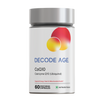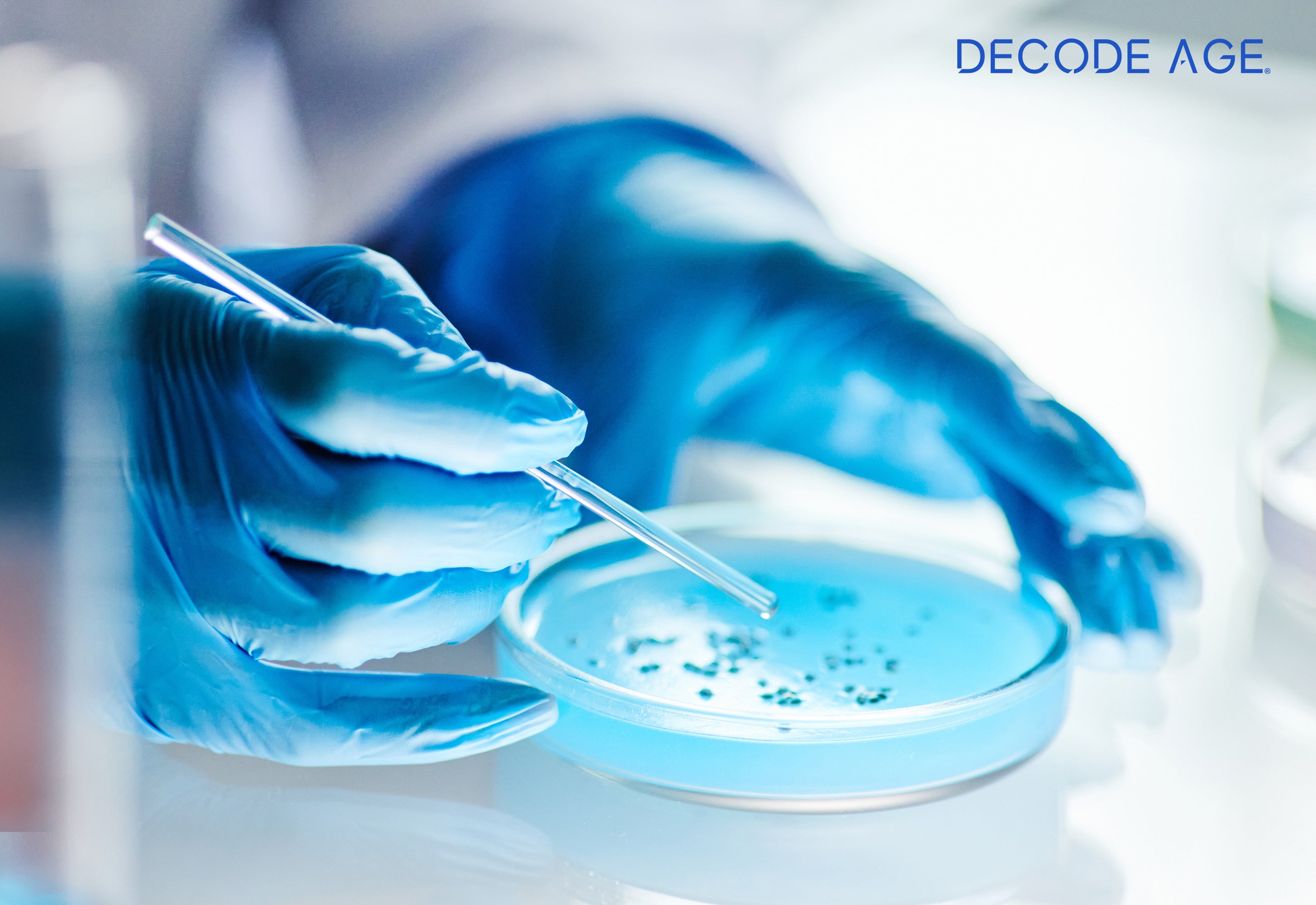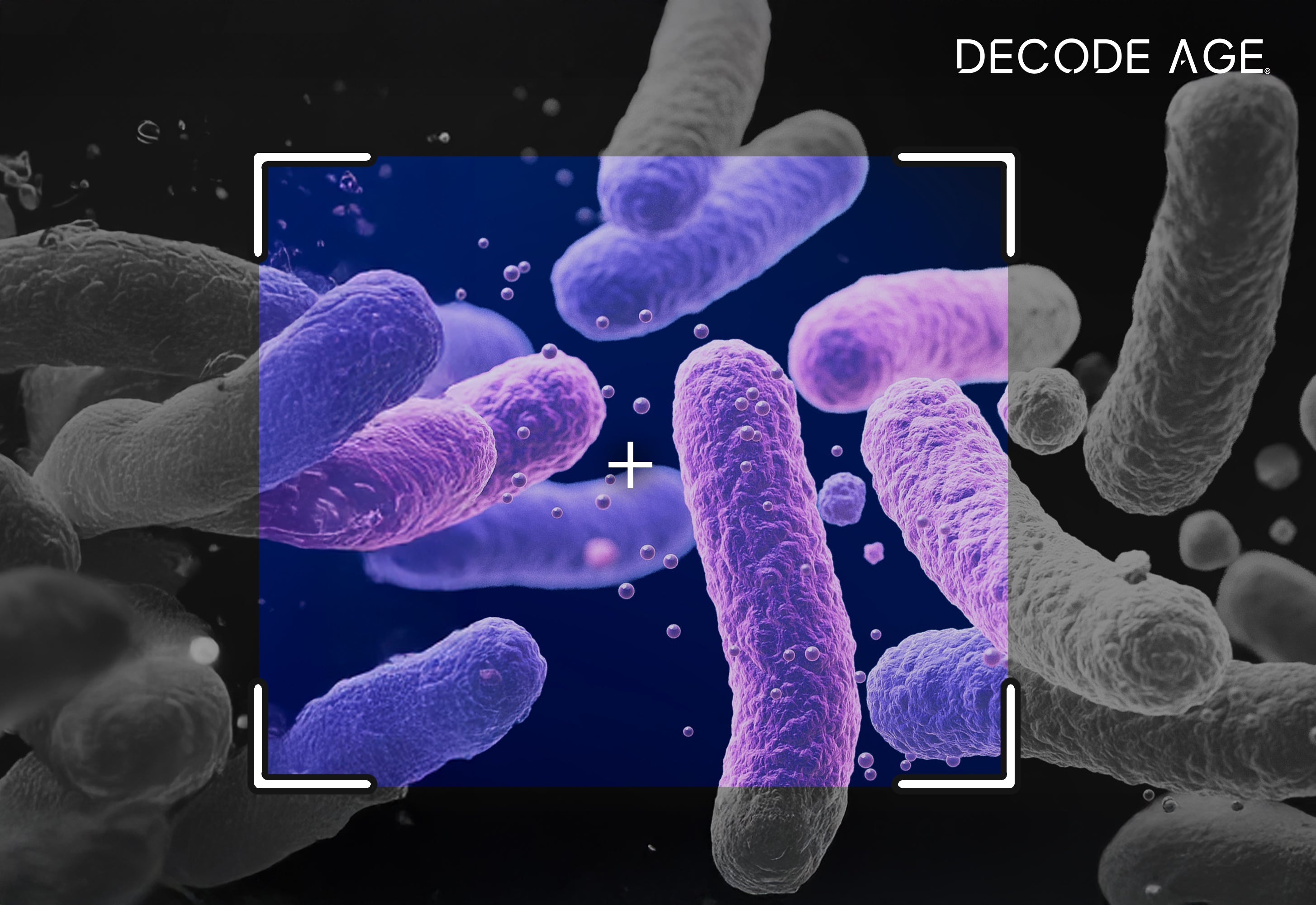The human body is a host to a diverse range of microorganisms including bacteria, archaea, fungi, protozoa, and viruses, with each part of the body having its unique microbial community structure. The gastrointestinal tract houses over 100 trillion microorganisms that maintain a mutually beneficial relationship with the host. The majority of the gut microbiota belongs to the phyla Firmicutes, Bacteroidetes, Proteobacteria and Actinobacteria, with Firmicutes and Bacteroidetes accounting for 70-90% of the total abundance. The gut microbiota plays a crucial role in maintaining a healthy balance in the host's body by utilising nutrients, interacting with other bacterial species and aiding in healthy homeostasis. This blog provides a general understanding of the gut microbiota's roles in host metabolism.
Introduction
The gastrointestinal tract of humans is a thriving ecosystem that comprises a diverse and dynamic community of microorganisms called the gut microbiota. This complex community plays a pivotal role in regulating gut health and exerting a profound impact on overall human well-being. The metabolic processes of the gut microbiota involve the degradation of macronutrients such as proteins, carbohydrates and lipids, which leads to the production of an extensive range of metabolites. These metabolites have far-reaching effects on host physiology and are a key determinant of gut health. The metabolites produced by gut microbiota possess the potential to modulate various physiological processes in the host, including energy metabolism, immune function, and gut barrier integrity. However, the effects of these metabolites on human health are complex and multifaceted, and both beneficial and detrimental outcomes have been reported. These microbial metabolites can act locally or systemically after they are absorbed into the bloodstream. The colon is the primary site of fermentation, but the small intestine also has a role in regulating nutrient absorption and metabolism. The microbial metabolic activity is influenced by several factors, including the form and size of food particles, the composition of meals, and transit time (1).
Nutrient metabolism by the Gut Microbiota: Physiological role

Indigestible Polysaccharide Degradation:
The gut microbiota is responsible for producing a range of short-chain fatty acids (SCFAs) via the fermentation of polysaccharides and dietary fibres that cannot be digested. These metabolites are essential for various physiological functions, such as regulating immunocyte development and playing a crucial role in energy metabolism. The three most abundant SCFAs are acetate, propionate, and butyrate, with butyrate being particularly vital for the maintenance of gut health. Acetate is the most concentrated SCFA and enters the liver through the portal vein, where it undergoes oxidation and is utilised by hepatocytes. Propionate, on the other hand, has a significant role in hepatic gluconeogenesis, regulating lipid metabolism, and improving insulin sensitivity (2).
The synthesis of SCFAs involves various pathways, including pyruvate-mediated glycolysis and the Wood-Ljungdahl pathway that produces acetyl-CoA from CO2 (3). Major bacterial taxa involved in butyrate production include Ruminococcaceae, Lachnospiraceae, Erysipelotrichaceae and Clostridiaceae of the Firmicutes phylum (4), while Acetobacter spp. and Gluconobacter spp. produce acetate (5). The production of propionate is facilitated by the bacterium Akkermansia muciniphila (6).
SCFAs play a crucial role in regulating energy and glucose metabolism, inflammation, and immune function. They are also vital for maintaining an anaerobic environment in the intestinal tract, inhibiting oxygen transfer into the intestinal lumen, and promoting intestinal barrier function. Furthermore, they contribute to defence against pathogens and protect against experimentally induced colitis by inducing colonic Treg (7).
Overall, SCFAs produced by the gut microbiota have significant implications for intestinal health and homeostasis.
Lipid and bile acids metabolism:

Bile acids are a group of important metabolites that play a vital role in regulating various physiological functions in the host. These compounds are synthesised in the liver from cholesterol and are conjugated with glycine or taurine to form bile salts, which are water-soluble. The gallbladder stores these bile salts, which are released into the intestine during digestion. Once in the gut, primary bile salts are metabolised by the resident gut bacteria to form secondary bile acids. The intestine actively reabsorbs these secondary bile acids, which are then delivered to the liver through the hepatic portal circulation. Some of the bile salts are deconjugated by gut bacteria, forming lipid-soluble bile acids that are passively absorbed into the hepatic portal circulation. This recycling process ensures that almost all the bile acids delivered to the duodenum are reused. The primary function of bile acids is to emulsify and aid in the absorption of dietary lipids (2).
Bile acids also function as ligands for bile acid receptors, such as transmembrane G protein-coupled receptor 5 (TGR5) and farnesoid X receptor (FXR). These receptors play a critical role in regulating energy and cholesterol metabolism and the expression of bile acid transporters. Activation of TGR5 by bile acids has been shown to increase energy expenditure and improve glucose tolerance, while activation of FXR reduces hepatic glucose production and enhances insulin sensitivity. Therefore, the modulation of bile acid metabolism by gut bacteria and their interaction with bile acid receptors is an important mechanism underlying the effects of gut microbiota on host metabolism and physiology (8).
The gut microbiome plays an important role in human health and longevity. Research has identified specific gut bacteria and their metabolites that may be associated with healthy ageing. Recent research has identified a correlation between the gut microbiota of individuals aged 100 years and above and the presence of specific bacterial species such as Parabacteroides merdae, Odoribacter laneus and Odoribacteraceae. These bacteria have the ability to produce isoallolithocholic acid, a bile acid with demonstrated antibacterial properties against Gram-positive bacteria. These properties suggest that isoallolithocholic acid may be involved in preventing gut dysbiosis and inflammation, potentially contributing to longevity (9).
Sphingolipids are a class of lipids that serve as essential structural components of cell membranes and have diverse roles in regulating cellular processes, such as cell signalling, apoptosis, and differentiation. While the biosynthesis of sphingolipids in eukaryotic cells is well-established, recent research has revealed the presence of genes associated with sphingolipid biosynthesis in certain bacterial species, such as Bacteroides fragilis. Bacteroides fragilis has been found to be the producer of α-galactosylceramide, a specific type of sphingolipid that has been found to inhibit the activation of natural killer T (NKT) cells in the gut. NKT cells play a crucial role in regulating the immune response and maintaining gut homeostasis. Research suggests that decreased fecal levels of Bacteroides sphingolipids, which are essential for the activation of natural killer T (NKT) cells, are linked to inflammation and inflammatory bowel disease (IBD) (10).
The gut microbiota plays an important role in regulating various metabolic pathways, including lipid absorption, bile acid and energy metabolism. The gut bacteria have been shown to metabolise dietary unsaturated fatty acids through enzymatic catalysts of hydration and dehydration. For example, Lactobacillus plantarum can produce hydroxy-, oxo-, and conjugated fatty acids, as well as partially saturated trans-fatty acids from unsaturated fatty acids. The administration of linoleic acid can activate the arachidonic acid cascade, resulting in chronic inflammation in adipose tissue. However, gut bacteria i.e., Lactobacillus salivarius and Lactobacillus gasseri can produce 10-hydroxy-cis-12-octadecenoic acid from linoleic acid hydroxylation, which has been shown to improve obesity, increase GLP-1 secretion, and enhance glucose metabolism (11).
Vitamins:
There are two types of vitamins: fat-soluble (A, D, E, and K) and water-soluble (B-complex and C). Fat-soluble vitamins serve as signalling molecules and bioactive effectors, and are transported to various tissues, while water-soluble vitamins function as coenzymes. The administration of vitamins has been shown to increase the biodiversity of gut bacteria and raise levels of SCFAs (12), but it is worth noting that gut bacteria themselves are capable of synthesising vitamins (13).
Humans cannot synthesise any vitamin, except vitamin D. Thus, they must rely on their diet and gut bacteria to obtain them. Bacteria inhabit the gut are capable of synthesising vitamins C, K, and B-complex vitamins, including thiamine (B1), riboflavin (B2), niacin (B3), pantothenate (B5), pyridoxine (B6), biotin (B7), folate (B9), and cobalamin (B12). It has been demonstrated in the research that approximately 40-65% of commensal bacteria in humans possess a pathway for synthesising B-complex vitamins (14).
The gut microbiota and vitamins interact with each other, with vitamins affecting the structure of microbial communities (12). In a study (15), the administration of vitamin A to neonates within two days of birth leads to changes in the gut bacterial composition in a manner that is dependent on the sex of the infant. Specifically, it increases the abundance of Bifidobacterium in boys but raises the levels of Actinobacteria and Akkermansia muciniphila in girls. Similarly, dietary intake of vitamin A and plasma concentrations have also been shown to have an effect on the gut bacterial composition, which may help protect against a variety of pathogens (16).
The gut microbial community structure is also influenced by vitamin D, with supplementation leading to significant changes in the abundance of Firmicutes, Actinobacteria, and Bacteroidetes. Recent research has shown that Veillonellaceae and Oscillospiraceae (both Firmicutes) are negatively associated with 25(OH)-D levels and vitamin D supplementation (17).
Vitamin D has also been found to offer protective effects against inflammatory bowel disease (IBD) by suppressing the activation of immune cells, strengthening the intestinal barrier, and enhancing the production of antibacterial peptides (12). It has been discovered that specific bacterial species have the ability to regulate vitamin D receptors (VDRs). Research has shown that the probiotics Lactobacillus rhamnosus and L. plantarum can increase VDR in intestinal epithelial cells (IECs), thereby offering protection against colitis in a VDR signalling-dependent manner (18). Additionally, a genome-wide association analysis has revealed that variations in VDR affect the diversity of gut microbiota and the abundance of Parabacteroides (19). This evidence suggests that the gut microbiome plays an important role in regulating vitamin D signalling and maintaining intestinal homeostasis.
Metabolism of amino acids:
The gut microbiota breaks down proteins and converts choline and l-carnitine in red meat to trimethylamine (TMA), which is then metabolised to trimethylamine-N-oxide (TMAO) in the liver. Animal studies have linked TMAO to an increased risk of atherosclerosis and cardiovascular disease (CVD) (20). Wang et al., in his study (21) has shown that 3,3-dimethyl-1-butanol (DMB), a structural analog of choline, can inhibit microbial TMA production. DMB administration can reduce TMAO levels and prevent the development of arteriosclerosis in mice. This suggests that targeting the gut microbiota could be a promising approach for preventing CVD.
The gut microbiota can also play a vital role in amino acids breakdown, including the essential branched-chain amino acids (BCAAs) valine, leucine, and isoleucine. Recent studies have revealed a link between elevated BCAA levels and insulin resistance in diabetic patients (22). The analysis of serum metabolomics and metagenomics data has shown that gut microbiota enriched in BCAA biosynthesis pathways, such as Prevotella copri and Bacteroides vulgatus are the primary contributors to this phenomenon. Notably, the oral administration of P. copri to mice fed a high-fat diet results in increased serum BCAAs and worsened glucose intolerance. These findings suggest that the production of BCAAs by gut microbiota may play a crucial role in the development of insulin resistance (23).
Research has also suggested a correlation between the aromatic amino acids (AAs) tyrosine, phenylalanine, and tryptophan and an increased risk of developing diabetes. The gut microbiota possesses genes that encode mediators of aromatic AA metabolism, and the administration of antibiotics can have a strong impact on these metabolic pathways. As a result, the metabolism of aromatic AAs by the gut microbiota has the potential to affect the host's AA profile (24).
Diet-Induced Changes in Gut Microbiota and Their Effects on Metabolism

Dietary intake plays a significant role in the progression of gastrointestinal (GI) disorders, as certain foods may act as potential etiopathogenetic factors (25). The composition and activity of microbes residing in the gut are influenced by long-term dietary intake (26). However, the rate and extent of the human gut microbiome's reproducibility in response to short-term changes in macronutrients remains unclear (27). Carbohydrate fermentation, or saccharolytic fermentation, predominantly occurs in the proximal colon, as most bacteria preferentially utilize carbohydrates over proteins (28). Conversely, proteolytic fermentation occurs in the distal colon, producing branched-chain fatty acids (BCFAs) and potentially harmful metabolites, such as ammonia (from amino acid deamination and urea hydrolysis), indoles, and phenols (from amino acid carboxylation). Therefore, the consumption of foods containing exclusively animal or plant-based ingredients can significantly alter the microbial community residing in the gut (26).
Consuming an animal-based diet, which includes meat, eggs, and cheese, can lead to an increase in bile-tolerant microbes such as Alistipes, Bilophila, and Bacteroides, and a decrease in Firmicutes that metabolise plant-based polysaccharides like Roseburia, Eubacterium rectale and Ruminococcus bromii (27).
Diet rich in high fat, especially in saturated fatty acids can lead to chronic low-grade tissue inflammation and cause an imbalance in gut microbial community, which is called dysbiosis. Dysbiosis can cause an increase in certain types of bacteria that belongs to Clostridium cluster XI. These variations in the microbial community can cause an altered metabolic profile within the colon lumen, which can have an adverse impact on overall gut health. Dysbiosis has been linked to a variety of health conditions i.e., type 2 diabetes, obesity, inflammatory bowel diseases etc. (29).
The consumption of a plant-based diet is linked to the fermentation of carbohydrates and a lower fermentation of amino acids. This dietary pattern may lead to an increased Bacteroidetes/Firmicutes ratio and result in weight loss due to a reduction in the energy extracted from the diet (30).
Individuals can be categorised into two groups based on their dietary patterns. Bacteroides are associated with an animal-based diet that is high in saturated fats and animal protein, while Prevotella is linked to an agrarian-type diet rich in fruits and vegetables, with a high intake of carbohydrates and simple sugars, and low levels of saturated fats and animal proteins (31).
The intestinal microbiome is profoundly influenced by dietary intake, which can have a significant influence on disease progression. A plant-based diet found to be associated with an increased number of beneficial bacteria, such as Bifidobacterium and Lactobacillus, which can provide anti-inflammatory and cardiovascular protection. Conversely, diets high in animal-based products and saturated fats can lead to a decrease in beneficial bacteria and an increase in bile-tolerant microbes. Furthermore, food microorganisms from ingested food can transiently or permanently colonise the gut, leading to changes in the microbiome. Such changes have been linked to conditions like obesity and IBDs, which are on the rise in the Western world. Dysbiosis, characterised by the proliferation of pathobionts like Bilophila wadsworthia, can trigger inflammation through the activation of dendritic cells that present antigens to naive T cells (32).
Conclusion
The complex ecosystem of microorganisms that make up the gut microbiome (GM) can significantly impact an individual's health, playing a role in weight control, metabolism, and other bodily functions. A well-functioning gut microbiome has been shown to support a strong immune system, enhance metabolism, and improve cognitive and cardiovascular health. As a result, promoting optimal gut health can lead to better overall health outcomes.
Research indicates that the GM can adapt to changes in diet, allowing for a greater diversity of human dietary habits. Diet is a crucial factor in shaping the GM. The incorporation of fresh, nutrient-rich fruits and vegetables, along with regular physical activity and stress management, has been shown to improve gut health.



























Leave a comment
All comments are moderated before being published.
This site is protected by hCaptcha and the hCaptcha Privacy Policy and Terms of Service apply.